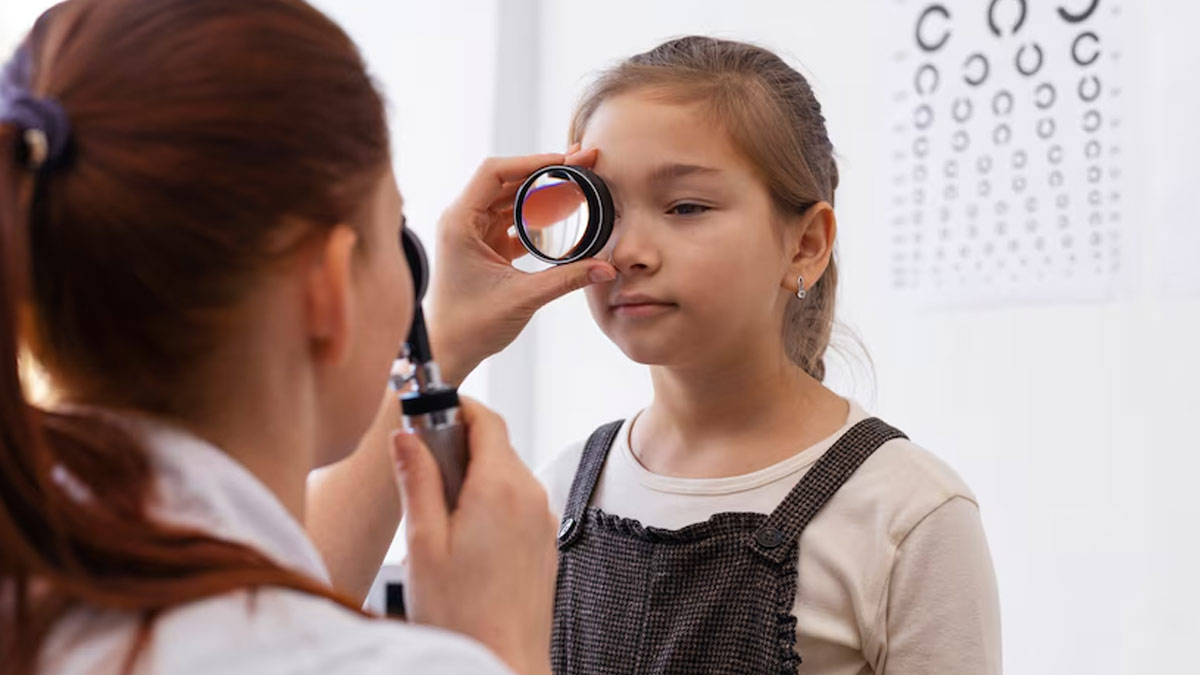
Amblyopia, commonly known as "lazy eye," occurs when one eye fails to achieve normal visual acuity, even with prescription glasses or contact lenses. This condition typically develops during early childhood and, if left untreated, can lead to permanent vision impairment. To understand more about this condition OnlyMyHealth team interacted with Dr Abhishek Chopra, Consultant Neonatologist and Paediatrician, Cloudnine Group of Hospitals, New Delhi.
Dr Chopra said, “Amblyopia is a vision development disorder that occurs in early childhood. It is the most common cause of vision impairment in children, affecting about 2-3% of kids. Amblyopia occurs when one eye develops better vision than the other, leading the brain to favor the stronger eye.” If left untreated, this condition can result in permanent vision loss in the weaker eye. Understanding the causes, symptoms, and treatment options is crucial for early intervention and effective management.
Causes of Amblyopia

Amblyopia develops when the brain and eyes do not work together properly. The condition usually arises from one of three underlying issues:
Strabismus (Misaligned Eyes): The most common cause of amblyopia is strabismus, a condition where the eyes are not properly aligned. Explaining, Dr Chopra said, “One eye may turn in, out, up, or down, leading the brain to rely on the stronger eye while ignoring the weaker one, eventually causing amblyopia.”
Refractive Errors: Amblyopia can also occur due to significant differences in refractive errors between the two eyes, such as nearsightedness, farsightedness, or astigmatism. “The brain receives one clear image and one blurred image, leading to the suppression of the blurred image, which weakens the vision in the affected eye,” Dr Chopra said.
Deprivation Amblyopia: This type of amblyopia occurs when something obstructs light from entering and being processed by the eye, such as a cataract or droopy eyelid. “Without clear visual input, the brain cannot develop normal vision in that eye,” said Dr Chopra.
Symptoms of Amblyopia

Amblyopia can be challenging to detect, especially in young children who may not realize they have a vision problem. According to Dr Chopra, parents and caregivers should be aware of the following signs and symptoms:
Squinting or Closing One Eye: A child with amblyopia might squint or close one eye when trying to see clearly, particularly when reading or watching TV.
Poor Depth Perception: Difficulty judging distances or a lack of depth perception can indicate amblyopia.
Head Tilting: Some children may tilt their heads to compensate for vision problems.
Eyes That Don’t Appear to Work Together: If a child's eyes seem to be misaligned or if one eye appears to drift, this could be a sign of amblyopia.
Frequent Eye Rubbing: Children with amblyopia may rub their eyes often due to eye strain.
Regular eye exams are essential for detecting amblyopia early, as children may not be able to articulate their vision problems.
Also read: Monsoon Eye Care: Expert Lists 8 Things To Avoid To Prevent Eye Infections This Season
Treatment for Amblyopia

The primary goal of treating amblyopia is to force the brain to use the weaker eye, thereby strengthening its vision. Early diagnosis and treatment are crucial, as the condition is more easily treated in younger children. Treatment options as per Dr Chopra include:
Corrective Eyeglasses or Contact Lenses: If refractive errors are the cause, wearing glasses or contact lenses can help correct the vision discrepancy between the eyes.
Patching: The stronger eye may be covered with an eye patch for several hours a day, compelling the brain to rely on the weaker eye. This method effectively improves vision in the weaker eye over time.
Atropine Drops: Atropine drops can be used in the stronger eye to blur its vision, encouraging the brain to use the weaker eye.
Surgery: In cases where amblyopia is caused by cataracts, strabismus, or other eye conditions, surgery may be required to correct the underlying issue.
Vision Therapy: Vision therapy involves specific exercises and activities that help improve the coordination between the eyes and strengthen the weaker eye.
Conclusion
Amblyopia, or lazy eye, is a common and treatable condition in children. Early detection through regular eye exams is key to successful treatment. With timely intervention, most children with amblyopia can achieve significantly improved vision, allowing them to fully engage in learning and daily activities. Parents and caregivers play a vital role in recognizing symptoms and ensuring their child receives the necessary treatment to prevent long-term vision problems.
Also watch this video
How we keep this article up to date:
We work with experts and keep a close eye on the latest in health and wellness. Whenever there is a new research or helpful information, we update our articles with accurate and useful advice.
Current Version
